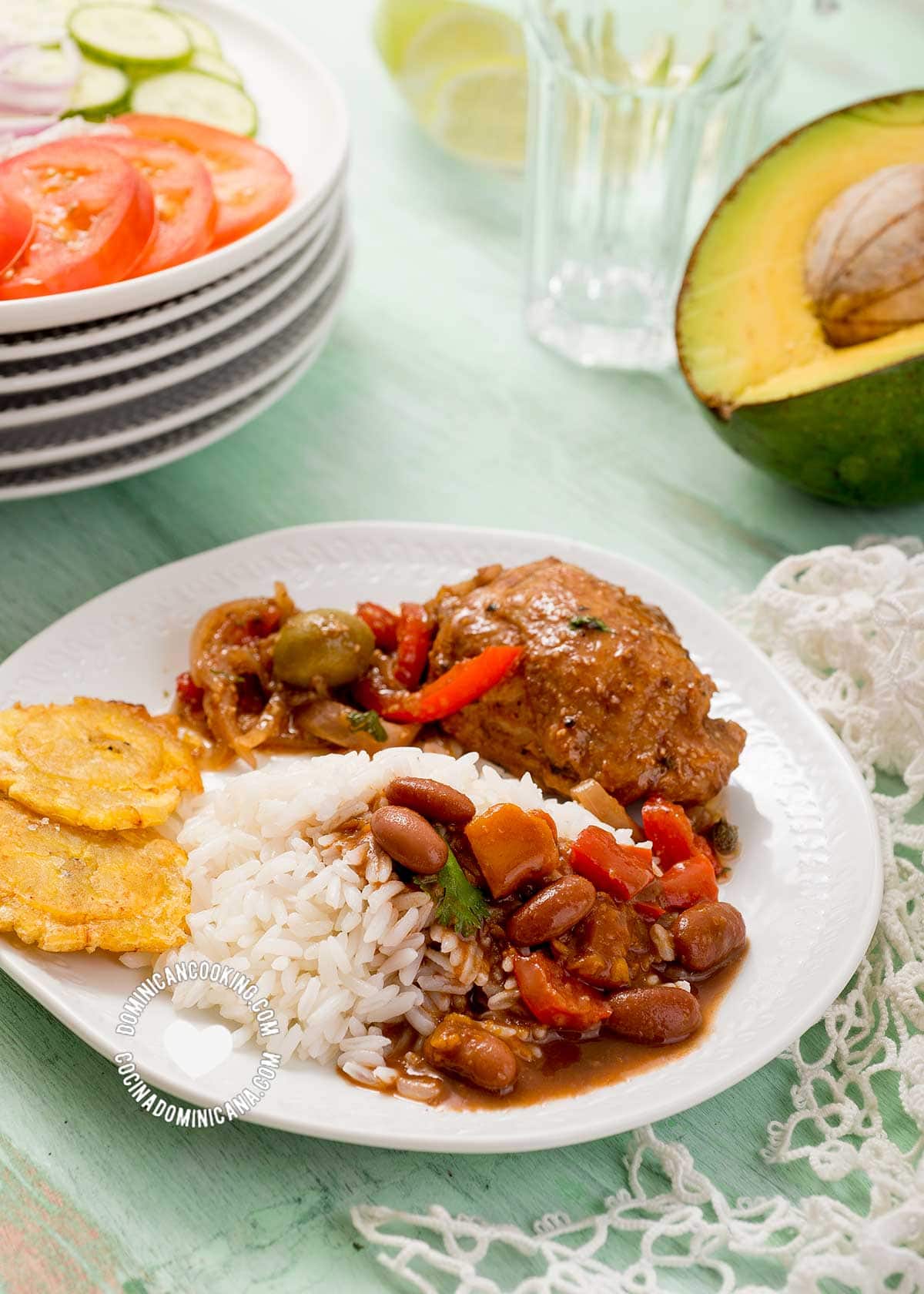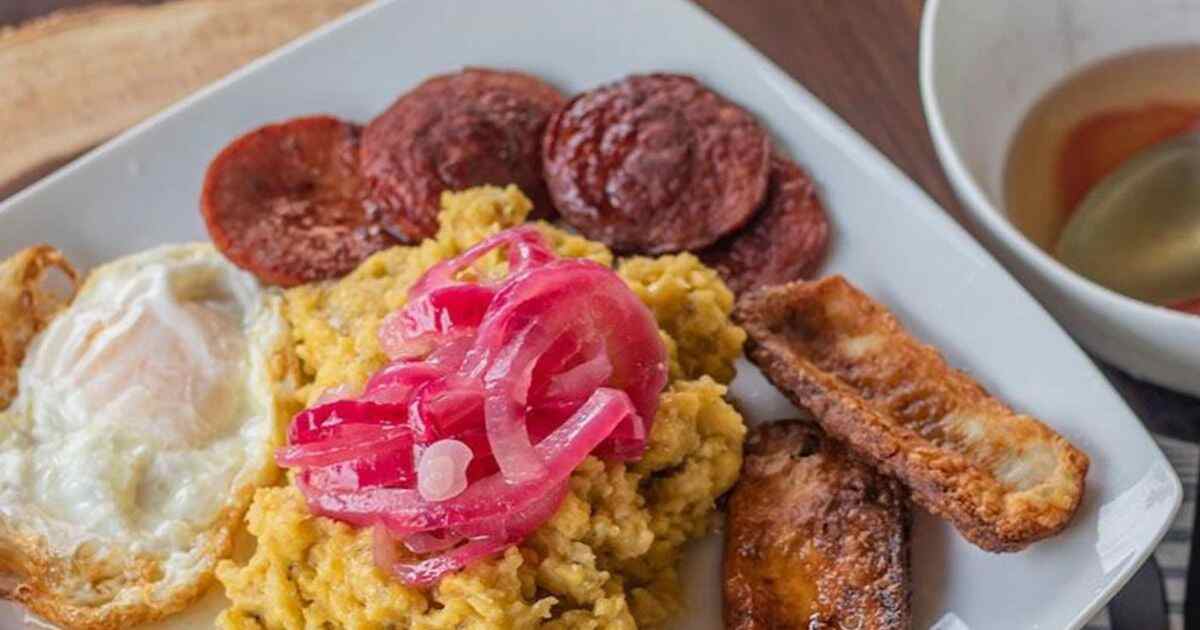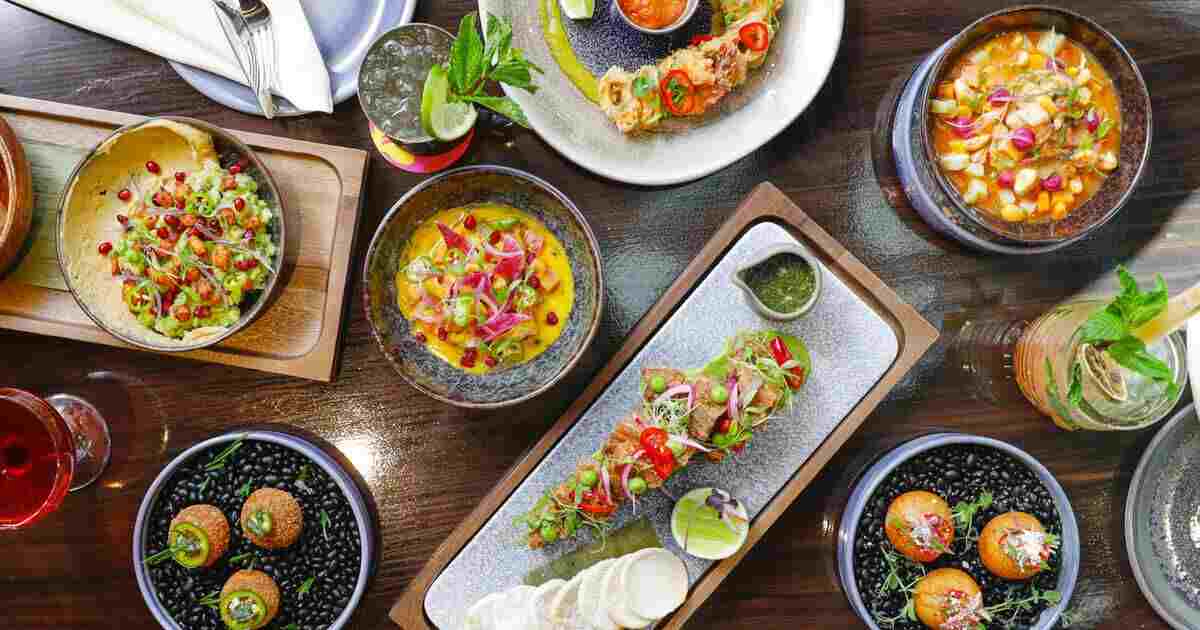Dominican breakfast typically consists of Mangú, fried eggs, fried cheese, and salami. This traditional meal is hearty, filling, and packed with flavor.
In the dominican republic, breakfast is taken seriously. A typical breakfast meal is usually quite substantial and is meant to give you the energy you need to start your day. One of the most popular breakfast dishes in the dominican republic is mangú, which is a mashed plantain dish that is often served with a side of fried eggs, fried cheese, and salami.
This meal is a hearty and flavorful way to start your day. In this article, we’ll explore the ins and outs of dominican breakfast and provide some ideas for how you can create your own version of this traditional meal.

Credit: www.dominicancooking.com
Why Try Dominican Breakfast Recipes?
Highlight The Unique Flavors And Ingredients Of Dominican Cuisine
Dominican breakfast recipes offer a unique blend of flavors that represent the country’s rich cultural heritage. Dominican cuisine reflects African, European, and indigenous Taino influences, making it distinct from other Latin American countries. Here are some of the ingredients and flavors that make Dominican breakfast recipes stand out:
- Fresh tropical fruits like mangoes, papayas, and pineapples
- Root vegetables such as yucca, plantains, and sweet potatoes
- Locally raised meats like pork, beef, and chicken
- Caribbean spices like oregano, coriander, and cumin
- Unique condiments like sour orange juice and ají picante (hot pepper sauce)
All these ingredients, when combined, form a winning flavor combination that is sure to satisfy your taste buds.
Discuss The Benefits Of Trying New Foods And Expanding Culinary Horizons
Expanding culinary horizons can open up a world of possibilities for food lovers. Here are some benefits of trying new foods:

- It can broaden your palate and give you a new appreciation for different flavors.
- It can provide new inspiration for home cooking and entertaining guests.
- It can expose you to new cultures and help you understand people from different backgrounds.
- It can encourage you to be more adventurous and try new things in other areas of life.
Every time you try a new dish, you take a small step into another culture and learn something new about yourself and the world around you.
Connect The Reader To Dominican Culture Through The Experience Of Trying These Recipes
Trying dominican breakfast recipes is not only a culinary experience, it’s also a way to experience the country’s vibrant culture and traditions. Food is an important part of dominican culture, and breakfast is no exception. By trying these recipes, you’ll get a taste of the dominican republic’s love for big, bold flavors and hearty morning meals.
You’ll feel like you’ve traveled to the island nation without ever leaving your kitchen. So, grab your apron and prepare to embark on a gastronomic journey that will leave you wanting more.
Mangú: A Dominican Breakfast Staple
Dominican breakfast cuisine is famous for its bold and vibrant flavors. One dish that is a must-try when visiting the Dominican republic is mangú. It’s a breakfast dish that has become a staple in Dominican households and eateries. This dish is made with boiled plantains and served with sides such as fried cheese, fried salami, and eggs.
Here’s everything you need to know about mangú.
History And Cultural Significance Of Mangú
Mangú is believed to have been originated from west africa and was brought to the caribbean by african slaves during the transatlantic slave trade. It was then modified by the taino indigenous people, who added various ingredients such as onions and garlic, which elevated the dish’s flavor profile.
Today, mangú is considered one of the dominican republic’s national dishes and symbolizes the country’s diverse cultural mix.
Flavors And Textures Of Mangú
Mangú is a simple dish, but the combination of flavors is what makes it so delicious. The boiled plantains are mashed until smooth and then topped with sautéed onions and accompanied by fried cheese, fried salami, and eggs.
The plantains provide a smooth and creamy texture, while the onions add a sweet and slightly tangy flavor. The fried cheese adds a crispy and salty contrast to the dish. The fried salami is savory and crispy and pairs perfectly with the eggs, which are either scrambled or fried.

Recipe And Step-By-Step Instructions For Making Mangú
Here’s a simple recipe for making mangú:
**ingredients:**
- 4 ripe plantains
- 2 cups of water
- 1 teaspoon of salt
- 1 onion, sliced
- 1 tablespoon of olive oil
- 4 eggs
- 4 slices of fried cheese
- 4 slices of fried salami
**steps:**
- Peel the plantains and cut them into small pieces.
- Boil the plantains in water with salt until they are tender, around 20-25 minutes.
- Drain the water and mash the plantains until smooth with a fork or masher.
- In a separate pan, sauté the onions in olive oil until slightly caramelized.
- In another pan, fry the eggs to your preferred style.
- Serve the mangú in a bowl, topped with the sautéed onions, fried cheese, fried salami, and eggs.
Mangú is a delicious and straightforward dish to make and is perfect for breakfast or brunch. It’s a cultural staple in the dominican republic and is a must-try for anyone who enjoys bold and eclectic flavors.
Salami And Eggs: Breakfast With A Caribbean Twist
Dominican breakfast is a tasty and satisfying meal that is sure to give you the energy you need to start your day. Salami and eggs is a classic dominican breakfast dish that is easy to make and bursting with flavor.
This unique combination of ingredients is sure to transport your taste buds to the caribbean!
Provide Recipe And Step-By-Step Instructions For Making Salami And Eggs
To make this delicious breakfast, you will need the following ingredients:
- 2-3 slices of salami
- 2 eggs
- 1 tablespoon of oil
- Salt and pepper to taste
Here are the step-by-step instructions:
- Heat the oil in a non-stick pan over medium heat.
- Add the salami slices to the pan and cook for 1-2 minutes on both sides until they are crispy and brown.
- Crack the eggs into the same pan and sprinkle them with salt and pepper.
- Cook the eggs for 2-3 minutes until the whites are set and the yolks are still runny.
- Serve the eggs and salami together on a plate and enjoy your delicious and satisfying breakfast.
Discuss The Role Of Salami In Dominican Cuisine
Salami is an essential ingredient in many traditional dominican dishes. It is often used to add flavor and texture to a variety of meals, from breakfast to dinner. Salami is frequently considered a staple food in dominican households, and it is widely available in local markets and grocery stores.
Highlight The Unique Flavors And Textures Of This Dominican breakfast Dish
When it comes to breakfast, few dishes are as satisfying as salami and eggs. The unique flavors and textures of this dish make it a caribbean classic. The savory, salty taste of the salami contrasts perfectly with the rich, creamy flavor of the eggs.
Together, they create a delicious and satisfying breakfast that is perfect for any day of the week.
Pastelón: The Perfect Dominican Breakfast Comfort Food
The Perfect Breakfast Comfort Food: Pastelón
Dominican breakfast is incomplete without trying the famous breakfast casserole dish, pastel on. It is a delicious and filling mix of sweet and savory flavors that Dominicans around the world enjoy. Made with ripe plantains, ground beef, and cheese, this dish can be enjoyed any time of the day, but it’s most commonly eaten for breakfast.
Discuss The Origins And Cultural Significance Of This Dish:
Pastelón originated in the dominican republic and has ties to puerto rican cuisine. It is related to the mexican lasagna dish but with a unique twist. It’s a layered dish made with sweet fried plantains that are starchy, have a hint of caramel-like sweetness and are perfect for a little bit of sweetness in the morning.
This dish is a symbol of dominicans’ creativity and resourcefulness in combining ingredients to make new dishes. Also, it is often served during special occasions and family gatherings, making it an essential part of dominican culture.
Highlight The Flavors And Textures Of This Sweet And Savory Dominican Breakfast Casserole:
Pastelón is all about the balance between the sweet and savory flavors in every bite. Here’s what makes this dish truly mouthwatering:
• sweet fried plantains: the plantains offer a sweet finish that counteracts the savory meat filling. The plantains used in this recipe are ripe plantains that have a yellow peel with black spots; they are the sweetest kind of plantain.
• savory ground beef filling: the ground beef filling in the pastelón is packed with flavor, thanks to the onions, garlic, peppers, and tomato sauce.
• melted cheese topping: the dish is topped with melted cheese that brings together the flavors of the sweet plantains and savory meat filling.
Provide Recipe And Step-By-Step Instructions For Making Pastelón:
Ready to make your own pastelón? Here are the ingredients and step-by-step instructions to make this classic dominican breakfast dish:
**ingredients:**
• 3 Ripe Plantains, Peeled And Cut Into Slices
• 1 Lbs. Ground Beef
• 2 Tbsp. Tomato Sauce
• 1 Large Onion, Chopped
• 2 Garlic Cloves, Minced
• 1 Green Bell Pepper, Chopped
• 1 Tsp. Salt
• 1/4 Tsp. Black Pepper
• 1/2 Cup Vegetable Oil
• 1/2 Cup Grated Cheese
**instructions:**
- Preheat the oven to 375°f.
- In a skillet, heat the vegetable oil over medium heat, add the plantain slices, and fry for 2-3 minutes per side until golden brown. Remove from the heat and set aside.
- In a separate skillet over medium heat, add the ground beef and cook until browned.
- Add the chopped onion, garlic, and green bell pepper to the skillet and continue cooking for an additional 3-5 minutes until the vegetables are tender.
- Add the tomato sauce, salt, and black pepper to the skillet and stir until well combined.
- In a baking dish, place half of the fried plantain slices to form the base of the dish.
- Add the beef and vegetable mixture to the baking dish, spreading it evenly over the base of plantains.
- Top the beef mixture with the remaining fried plantain slices.
- Sprinkle the grated cheese over the top of the dish.
- Bake the pastelón in the oven for 20-25 minutes, or until the cheese is melted and the plantains are soft.
- Allow the pastelón to cool for a few minutes before slicing and serving.
Overall, pastelón is a unique breakfast dish packed with sweet and savory flavors that are sure to keep you energized throughout the day. Why not try making it yourself and enjoy a true cultural experience?
Tortilla De Yuca: A Tasty Gluten-Free Alternative
If you’re looking for a delicious and gluten-free breakfast option, look no further than the tortilla de yuca! Made with cassava flour, this traditional dominican dish offers a unique texture and flavor that is sure to satisfy.
Benefits Of Yuca As A Gluten-Free Alternative To Wheat Flour
Yuca, or cassava root, is a great alternative to wheat flour for those with gluten sensitivities. Here are some of the benefits:
- Naturally gluten-free: Cassava flour is naturally gluten-free, making it a safe option for those with celiac disease or gluten intolerance.
- Rich in nutrients: Cassava is rich in vitamin c, folate, and potassium.
- Low in calories: Cassava is lower in calories than other starchy vegetables like potatoes.
Provide Recipe And Step-By-Step Instructions For Making Tortilla De Yuca
Here’s how to make your own tortilla de yuca at home:
Ingredients:
- 2 cups of cassava flour
- 1 egg
- 1 teaspoon of salt
- 1/4 cup of olive oil
- 1 cup of water
Instructions:
- In a large mixing bowl, combine the cassava flour, egg, and salt.
- Gradually add the water to the mixture, stirring continuously until a dough forms.
- Knead the dough until smooth, then divide into eight equal portions.
- Roll each portion into a ball and flatten it into a tortilla shape.
- Heat a non-stick skillet over medium heat and add the olive oil.
- Fry each tortilla for two to three minutes on each side or until golden brown.
- Serve hot and enjoy!
Flavor And Texture
Tortilla de yuca offers a unique flavor and texture that is sure to delight your taste buds. The cassava flour adds a slightly sweet and nutty flavor, while the texture is chewy and satisfying. Plus, this dish is incredibly versatile and can be paired with a variety of toppings, from honey and butter to savory fillings like meat and cheese.
So why not give this delicious and healthy breakfast option a try? With its unique taste and gluten-free benefits, it’s sure to become a favorite in your household.
Bizcocho De Piña: A Sweet And Satisfying Dominican Breakfast Treat
Dominican Breakfast: Bizcocho De Piña
When it comes to breakfast in the dominican republic, one can expect a wide variety of dishes with flavors ranging from savory to sweet. However, if you have a sweet tooth, then bizcocho de piña is a must-try. This delectable breakfast treat is a type of pineapple cake that is perfect for starting your day with a sweet and satisfying meal.
Provide Recipe And Step-By-Step Instructions For Making Bizcocho De Piña
Making bizcocho de piña is easy and requires only a few ingredients. Here is a simple recipe for you to follow:
- Ingredients:
- 1 can of pineapple tidbits or chunks (15.25 oz)
- 1 cup of all-purpose flour
- 1 tsp of baking powder
- 1/4 tsp of salt
- 1/2 cup of unsalted butter (room temperature)
- 3/4 cup of granulated sugar
- 2 large eggs (room temperature)
- 1 tsp of vanilla extract
- Powdered sugar (for dusting)
- Instructions:
- Preheat your oven to 350°f (180°c).
- Drain the can of pineapple and reserve the syrup.
- In a bowl, whisk together the flour, baking powder, and salt.
- In another bowl, mix the butter and sugar with an electric mixer until creamy.
- Add the eggs one at a time and mix well.
- Add the vanilla extract and mix.
- Add the dry ingredients and mix until just combined.
- Pour the reserved syrup into a 9-inch (23 cm) round baking pan.
- Place the pineapple tidbits on top of the syrup in a single layer.
- Pour the batter over the pineapple and spread it evenly.
- Bake for 35-40 minutes, or until a toothpick inserted in the center comes out clean.
- Let it cool to room temperature before dusting with powdered sugar.
Discuss The Traditional Role Of Cake In Dominican Breakfasts
The tradition of eating sweet cakes in the morning dates back to the colonial era, where the spanish introduced wheat flour to the island. Since then, dominicans have incorporated cakes into their breakfast meals, often served with a cup of coffee or hot chocolate.
It’s not uncommon to see dominican households with a cake or two in their kitchen, ready to be eaten in the morning or served to guests.
Highlight The Tropical Flavors And Sweetness Of This Delectable Breakfast Treat

Bizcocho de piña is a perfect example of the tropical flavors that the dominican republic has to offer. Pineapple, with its sweet and tangy taste, adds a refreshing twist to the cake’s sugary base. The pineapple syrup at the bottom of the pan caramelizes during baking, creating a mouthwatering glaze that complements the cake’s fluffy texture.
This delectable breakfast treat is a must-try for anyone visiting or living in the dominican republic.
Frequently Asked Questions Of Dominican Breakfast
What Is Dominican Breakfast And What Does It Consist Of?
Dominican breakfast is a hearty morning meal that typically includes eggs, fried cheese, plantains, sausage, and mangu, a dish made of mashed plantains served with onions and salami. This filling meal is meant to help you power through the day.
Can I Find Dominican Breakfast In The United States?
Yes, many dominican restaurants in the united states serve traditional dominican breakfast dishes. You can also try making it at home using online recipes and ingredients easily found in grocery stores.
What Does Mangu Taste Like?
Mangu is a unique dish made of mashed plantains served with onions and salami. The flavor is similar to mashed potatoes, but with a slightly sweeter taste due to the natural sweetness of plantains. The onions and salami add a delicious savory flavor.
Is Dominican Breakfast Typically Spicy?
No, dominican breakfast is not usually spicy. However, if you like spice, you can add hot sauce or peppers to your meal. Just be sure to ask for them, as they are not typically included in traditional dominican breakfast dishes.
What Is The Best Time To Have Dominican Breakfast?
Dominican breakfast is typically eaten in the morning, but it can be enjoyed at any time of the day. It is a hearty meal that can keep you full and energized for several hours, making it a great option for a late breakfast or brunch.
Conclusion
The delightful blend of flavors and colorful presentation of dominican breakfast will surely leave a lasting impression on your taste buds. This hearty meal is perfect to start your day and energize you for the day’s activities. Whether you prefer a sweet or savory breakfast, dominican cuisine has it all.
From the rich and creamy mangú to the delicious fried eggs paired with crispy bacon, every bite will transport you to the warm and vibrant culture of the dominican republic. The use of fresh herbs and spices in the preparation of these dishes not only enhances the taste but also adds some health benefits.
Whether you are a foodie or not, you should give dominican breakfast a try and get ready to be pleasantly surprised. Don’t forget to share your experience with us in the comments below!




